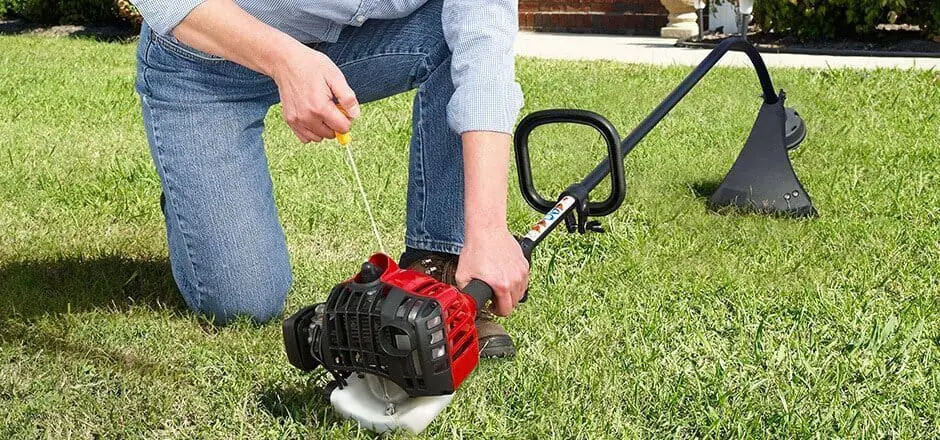Is Using An Electric Weed Eater Easy Or Hard?

Using an electric weed eater is really easy to do; in fact, it is a lot simpler than using a battery-powered weed whacker or a gas powered one. Less to do in order to begin, less to do while working and even less to do when cleaning up and putting this piece of heavy equipment up when you are done with the yard. First things first, you will use your lawn mower to mow your grass and take care of all that you can get done. The area of your lawn in which your lawn mower can’t reach is where your electric weed eater comes into play.
An electric string trimmer may be higher priced than the other weed whackers out there but they are well worth the price and you can choose from electric versions that have cords and some that do not have cords. The one with cords come in several different forms, mainly the difference in the way the handle is and what the length of the cord is. The length of the cord is vital because if you have a big yard you need a lot of cord but if you have a small yard than a little bit of cord is just fine. However an electric weed eater without a cord is ideal for yards that are small.

One that does not have a cord uses some batteries to run off of. Both versions have their own set of pros and cons to them. With that being said the choice is up to you and it is not a hard choice to make. Both kinds work pretty much in the same way and can get the job done that you need to get done. Sure a cordless one you will have to wait for the battery to recharge in order to finish what you need to do unless you only have a small area to work in but you still save money, time and you won’t be as sore as you would be at the end of the day if you had used a gas powered weed whacker. Below is information on how you can properly eat weeds with an electric weed eater.
Tips to Properly Using an Electric Weed Eater
- Wear proper clothing that will protect you: This means that you should wear long pants, preferably jeans along with sturdy work shoes/boots. This also means that you should wear some safety glasses to avoid debris getting into your eyes and to make sure that you can always clearly see what all is going on; you know what you got done and what you need to still get done. Wearing some ear plugs is recommended but not really need because electric weed eaters are a lot quieter when in use than gas powered ones.
- Check your weed eater and your lawn before using: Make sure that your string trimmer is clean of debris at the head and that your nylon string is pulled out far enough like it should be. Also check your lawn, things such as metal pieces, pebbles, little twigs, leaves, dead grass and even glass pieces can get caught in the nylon string, hurt the string, the weed eater, you or something/someone else. Pick things up that may be in the way and throw away all of the junk, in the end it is better to be safer than sorry.
- Care for your Cable, if you have one: Using an electric string trimmer is fun but remember that there is a cord and you should not hit it. It should never be in the way; an electric weed whacker may not be as powerful as a gas one so you may not cut through the whole cord but you sure will damage the insulation that surrounds the wiring on the inside. Based on your yard you could put some cord ties here and there to let the cord sit on while you are moving from section to section.
- You are not the only one who can get hurt: Sadly enough research proves that those who are bystanders in yard work like with weed eaters, that they are the ones who more likely get hurt or injured by the debris than the user of the electric weed whacker themselves. This is because when you hit debris is travels upwards at a fast rate and eventually it is at eye level; this happens more when the ground you are working on is not level. For the best results when someone is around, stop what you are doing and wait for them to leave. Children should not be around the equipment or the work area at all because the equipment is too dangerous for them.
The other articles may you concern, as this is by:

